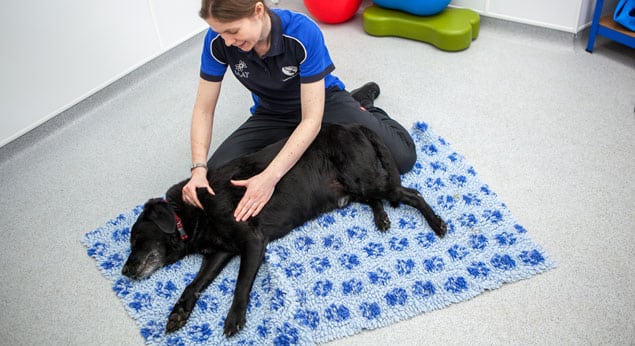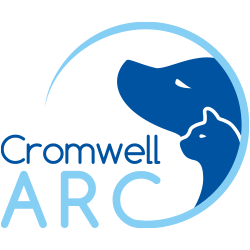Physiotherapy

Physiotherapy aims to restore movement and function using a range of manual therapies, exercises and lifestyle changes. The Cromwell ARC is well equipped to offer a range of physiotherapy treatments, including:
-
Massage and Mobilisations – Massage is the manual manipulation of soft tissue, which includes muscle, tendons, ligament and fascia, to bring about a therapeutic effect. Its’ benefits have been recognised for thousands of years; paintings of massage therapy dating back to as early as 2500BC have been found on the walls of Egyptian burial tombs.
Massage is useful for treating tense and painful muscles, helping to maintain or improve the range of motion of joints, reduce the painful ‘splinting’ effect that occurs when joints are injured or diseased and can be an excellent way of improving the overall wellbeing of a pet.
In combination with massage therapy, our physiotherapists may also use a range of mobilisations to help your pet. These manual techniques are used to relieve pain and maintain or improve the range of motion of your pet’s joints.
-
Myofascial Release – The fascia is a layer of connective tissue that surrounds the muscles, tendons and ligaments. When these structures become damaged, the fascia is also damaged. Myofascial release is a specialist massage technique that addresses the damaged fascia.
-
Therapeutic Ultrasound – Ultrasound waves are passed through the soft tissue (muscles, tendons and ligaments). This causes the particles within the soft tissue to vibrate and the energy within the ultrasound waves to be transferred into the soft tissue. This additional energy promotes optimum conditions for healing, meaning therapeutic ultrasound is an excellent therapy for soft tissue injuries. It is also very useful when dealing with old injuries and scar tissue.
-
Pulsed Electromagnetic Field Therapy (PEMF) – Pulsed Electromagnetic Field Therapy or PEMF, is the application of a magnetic field to the body. Rather than being a static magnet, like those we might put on dog collars or wear on bracelets, the magnet used for this therapy has an alternating electric current sent through it, meaning the magnet rapidly switches on and off. This causes small electric currents to form within the cells of the body which in turn, bring about therapeutic effects. Your physiotherapist may choose to use this painless treatment for your pet if they want to help control pain, reduce inflammation, treat very new injuries or old injuries that have failed to heal fully (including fractures).
-
Exercise Based Rehabilitation – The ultimate aim of physiotherapy and rehabilitation is for your pet to get back to doing all the things they love. An effective way of achieving this is through the use of therapeutic exercises. At an appropriate point in your pet’s treatment, your physiotherapist will introduce simple but targeted exercises to encourage them to move in a very specific way. For example, your pet may be asked to walk over a series of poles to encourage them to flex and extend their joints or to stand on a wobble cushion to improve core strength!
As most pets benefit from performing these exercises daily, your physiotherapist will spend time showing you how to ask your pet to perform them safely and correctly at home.


